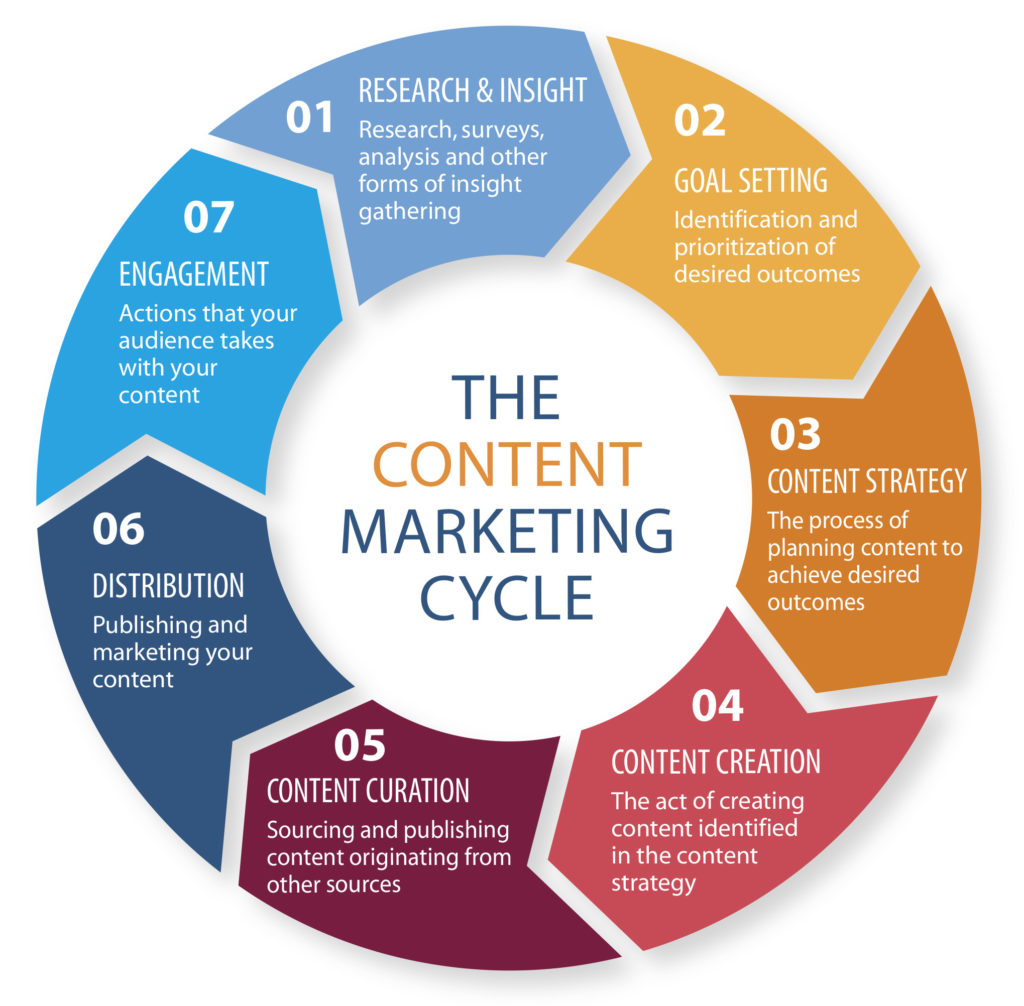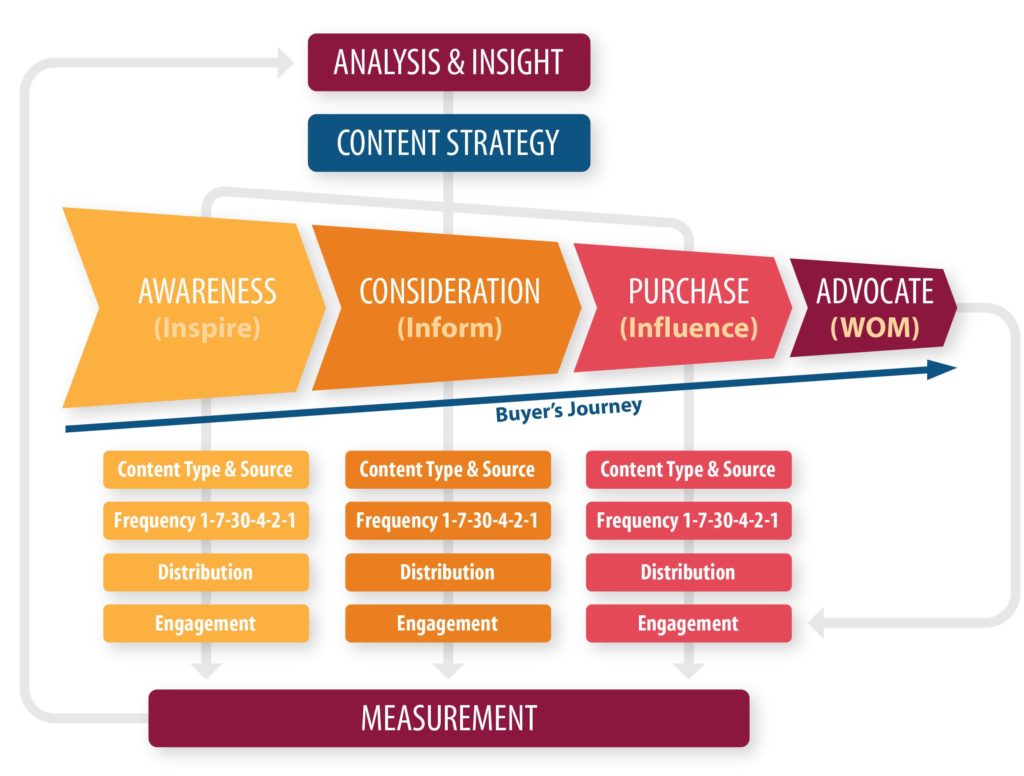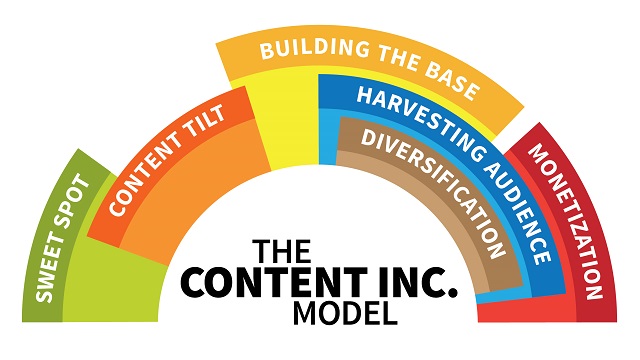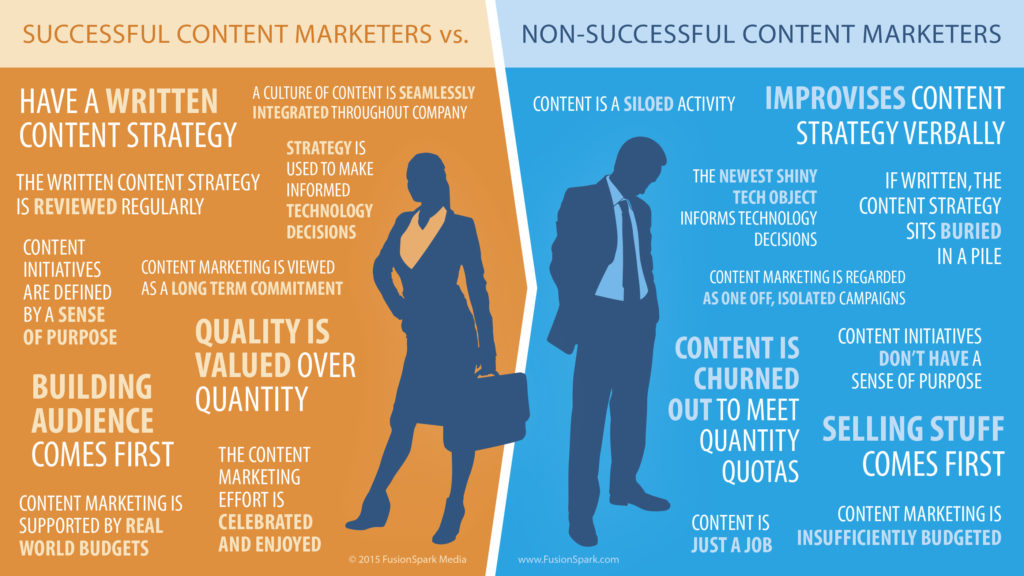(Total read time: 2 Minutes)
Eight years after the start of content marketing in 2008 (I’m counting from the publication of the book Get Content, Get Customers, by Joe Pulizzi), there are 100s of thousands of blog posts about content marketing (and honestly, probably much more than that!)
For the veteran content marketer as well as the newbie, it’s a bewildering quantity of content about content marketing!
Therefore, my objective is to strip Content Marketing down to its essence in one blog post, from strategy and tactics, to the activities and practices that ultimately separates successful content marketers from unsuccessful content marketers.
Each of the following headings has its own graphic, to help explain the essentials of Content Marketing:
- The Content Marketing Cycle
- The Customer’s Journey
- The Content, Inc. Model
- Successful vs. Unsuccessful Content Marketing
So, here it is, Content Marketing in just 2 minutes!
THE CONTENT MARKETING CYCLE

Essential points about the Content Marketing Lifecycle include:
- Successful Content Marketing is a cycle, and not a series of one off content events
- The cycle begins with insight gathering and analysis of goals, audiences and audiences needs
- Insights and established goals inform the creation of a written content strategy
- The written content strategy defines the entire process of content creation, curation, distribution and engagement
- The written content strategy helps define design and marketing technology needs
- Having a written content strategy is a key factor in success in content marketing
- The cycle depends on analyzing metrics, making adjustments based upon the metrics, and continuing the cycle
CONTENT AND THE CUSTOMER’S JOURNEY

Essential points about Content and The Customer’s Journey include:
- Understanding your Customer’s Journey starts with the Insight/Analytics and Content Strategy phases of the Content Marketing Cycle (previous graphic)
- There is a Content Type & Source, Frequency, Distribution and Engagement consideration for each of the standard phases of the Customer Journey, i.e. Awareness, Consideration and Purchase
- There is a need for Measurement for each of the Customer Journey phases (awareness, consideration and purchase), the results of which are fed back into the Insights / Analytics and Content Strategy steps of the Content Marketing Lifecycle. Based on new information, new insights, adjustments are made to the ongoing content marketing initiative
THE CONTENT, INC. MODEL

Source: Content, Inc., written by Joe Pulizzi
Essential points about The Content, Inc., Model include:
- Successful Content Marketing requires identifying your company or brand’s “Sweet Spot,” or area of expertise or unique insight, around which your editorial focus, or “Content Tilt,” can be developed
- Essential to Content Marketing is the practice of building your Subscriber Base, or your Owned Audience, as the primary focus of the Content Marketing initiative
- Primarily with an opt-in audience, Email Marketing and Marketing Automation are the approaches (although not exclusively) for engaging with the audience, and moving the audience to convert from Awareness/Consideration to Purchase.
Source: Content, Inc.
SUCCESSFUL VS. UNSUCCESSFUL CONTENT MARKETERS

Essential points about Successful versus Unsuccessful Content Marketing:
- Industry experience, combined with research such as Content Marketing Institute’s Benchmarks, Trends and Budgets reports, clearly identifies best practices that separate “successful” from “unsuccessful” Content Marketers
- A written content strategy, a focus on building an audience, a focus on quality over quantity, a long term commitment and complete team buy-in are a few of the factors that separate successful content marketers from unsuccessful ones
- Strategy is used to make informed Marketing Technology decisions, including how a website is built, which CRM will be used, and so on